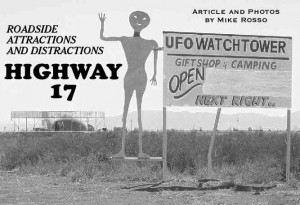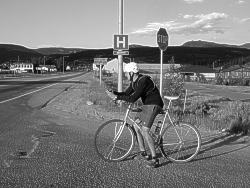Review by Jeanne Englert
Colorado Politicians – October 2002 – Colorado Central Magazine
Wayne Aspinall and the Shaping of the American West
by Steven C. Schulte
Published in 2002 by the University Press of Colorado
ISBN O-87081-665-9
Wayne Aspinall. I was nearly ten, an Aspen kid, before I knew his name was not “Damnaspinall.” That epithet was a measure of how strongly my parents, who seldom swore, opposed the Frying Pan-Arkansas Transcontinental Divide reclamation project, which was slated to tap the headwaters of the Frying Pan and Roaring Fork Rivers, and Hunter, Maroon and Castle Creeks in western Colorado.
Aspinall was the Colorado then-Fourth Congressional District congressman who rose in rank to become chair of the powerful House Interior and Insular Affairs Committee from 1959 to 1973.
The story of Fry-Ark, the Pitkin County insurrection over it, and other major battles over Western reclamation, land, wilderness, and natural resource policies are described in meticulous detail in Steven Schulte’s biography of Wayne Aspinall.
These battles, of course, include the Echo Park Dam fight during the protracted debate over passage of the Colorado River Storage Project Act; the struggle to pass the Wilderness Act over Aspinall’s objections; and the 1960s pitched battle to authorize the Central Arizona project and the five Western Colorado water projects — Dallas Creek, Dolores, San Miguel, West Divide, and Animas-La Plata — that Aspinall extracted as the price for his support.
Aspinall, the man, is gradually revealed through the pages delineating these Congressional struggles, and Aspinall’s own words, and those of his foes.
What becomes especially clear in this book is Aspinall’s unshaken belief that conservation of natural resources meant solely what he called “wise development” of them — rather than the values espoused by “preservationists,” “extreme environmentalists,” and “special (recreational) interests,” eg. anyone opposed to natural resource development
For example, in both the fights over construction of the Echo Park and Bridge Canyon dams, Aspinall was unpersuaded by pictures of those beautiful places, which he insisted were a dime a dozen in the West. “I have got 10,000 acres in my district as beautiful as Glen Canyon which are available to people who want to see them,” he noted.
His lament, in both the above battles and in the struggle to set land aside for wilderness protection, was that one would always wonder what wonderful treasures to be developed lay under the surface.
Aspinall deemed recreational values acceptable only under the rubric of the greatest good for the greatest number. Thus Lake Powell, in addition to its utilitarian purpose to provide electric power and be a cash register dam — using power sales to (theoretically) pay for future irrigation projects — would also enable the greatest number of Americans to experience the wonders of the West’s canyonlands.
The story of these epic battles that have shaped the West which we inhabit today has been told before, often more elegantly, and certainly more dramatically, in such books as Cadillac Desert, River No More, and Rivers of Empire, but not with such exacting thoroughness. And Schulte humbly gives proper deference to the authors of those books. For instance, he urges us to read the section in Cadillac Desert where its author, Marc Reisner, demolishes the myth that “these dams pay for themselves.”
Schulte’s copious endnotes, while at first a mild annoyance, became essential to my understanding of the strategies deployed in passage of, or blocking of, the legislation he tracks. Aspinall used adroit parliamentary maneuvers and his superior knowledge of House rules and procedures, along with his relationships with the Eisenhower, Kennedy, Johnson, and Nixon administrations to achieve his ends.
And, thanks to Schulte, I learned that the Indian blanket strategy of using Indian water rights to justify reclamation projects was not, as I had thought, the creation of backers of the Dolores and Animas-La Plata projects. It owes its origins to Aspinall himself, who proposed renaming Bridges Canyon Dam, Hualapai Dam, after the Indian tribe whose reservation lies within the Grand Canyon near where that dam would have been built. “And get a chief to testify,” Aspinall cynically advised.
But Schulte’s meticulous scholarship still fails to solve the conundrum of Aspinall’s support of the Frying Pan-Arkansas project, which, contrary to everything he’d promised his loyal constituents, would not develop Western Slope water for Western Slope use, but would divert it into the Arkansas drainage to irrigate Rocky Ford cantaloupes and spur the growth of Colorado Springs and Pueblo.
I’ve often thought Aspinall’s support of that project, which Newsweek’s Raymond Moley, a former New Dealer, called “a Rube Goldberg contraption in the Rockies,” was just to show he had the clout to get any project built he gave his blessing to.
There are intimations in the book that suggest there’s truth to my pessimistic suppositions. And those intimations, supported by Aspinall’s own words and those of his supporters and detractors, kept me intrigued until the end.
Plus there’s even some suspense not always found in an academic work. The reader is bound to wonder, just who are Aspinall’s constituents? Really. Certainly not Pitkin Countyites, who wanted to keep the water on the Western Slope, where, as Aspinall had said, “the snow falls and the rivers run.”
In the chapter describing Aspinall’s ignominious defeat in the 1972 Democratic primary to a University of Denver egghead professor backed by Eastern money, Schulte lets Tom Gavin tell us.
“In an election wrap-up entitled ‘They’re Sorry Aspinall Lost,’ Denver Post columnist Tom Gavin listed several dozen people and the amount of money they had contributed to Aspinall’s campaign. Starting with Denver oilman Marvin Davis’s $1,000, Gavin went on to list “a virtual who’s who of the West’s energy industry.”
So the reader is free to form his own judgment. Aspinall had to have known those five Colorado projects were nothing but porkbarrel trash. He knew the cost-benefit ratio of Fry-Ark was dismal. He even knew that there wasn’t sufficient water in the Colorado River Basin to build all the projects on the books.
And how could he have not known that the foundations in Grand Junction built on Union Carbide tailings were radioactive? It was his home town!
Having grown up during the impassioned debate over Fry-Ark, and as one who still struggles to stop the Animas-La Plata boondoggle, I found ample confirming evidence of my judgment of the man in these pages.
I’ll let the poet speak for me: “And when to mischief mortals bend their will, how soon they find fit instruments of ill.” (Alexander Pope, The Rape of the Lock)
EDITOR’S NOTE: In case our readers are wondering, the Fry-Ark project which Englert condemns as another costly boondoggle — and which was no doubt built because it facilitates growth in Colorado Springs and Pueblo and allows the expansion of agribusiness on the plains — is also the Fry-Ark project which has served Salida and other small Arkansas River towns so well during this summer’s drought.


